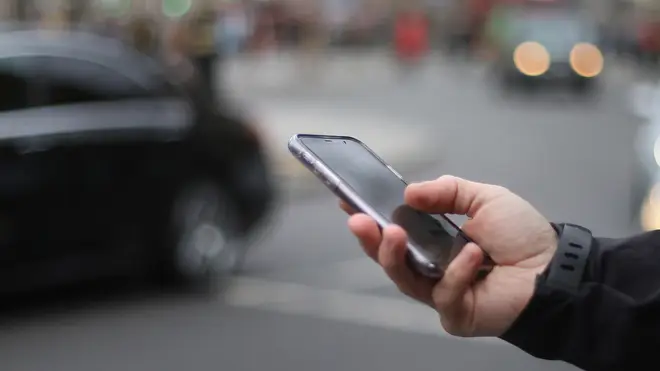
Ben Kentish 10pm - 1am
2 March 2021, 05:04

A new study suggests that the length of time spent on a smartphone is not a key indicator of addiction.
More than a third of young adults have reported symptoms of smartphone addiction, regardless of the length of time spent on their device each day, a new study has found.
Research from King’s College London revealed that around 39% of people aged 18-30 reported symptoms such as losing control over how long they spend on their phone, distress when they cannot access it, and neglecting other areas of their life.
Smartphone addiction is not formally recognised as a clinical diagnosis, but it is the subject of research using a validated tool known as the smartphone addiction scale, which was used as part of the study.
The research found that more than two-thirds (69%) of those showing signs of phone addiction reported poor sleep regardless of the time spent looking at their phone.
However, more than half of those asked (57%) of those adjudged to not have a smartphone addiction said they too had suffered from poor sleep.
According to the study, around a quarter of those who showed signs of addiction used their phone for three hours a day and a further 18.5% said they used their device for more than five hours each day.
Samantha Sohn, lead author at King’s College London’s Institute of Psychology, Psychiatry and Neuroscience (IoPPN), said: “Smartphones are increasingly becoming indispensable parts of our daily lives, and this study is an important step in looking at their impact in terms of dysfunctional use and on sleep in a UK population.”
Dr Ben Carter, senior lecturer at IoPPN, said: “Our study provides further support to the growing body of evidence that smartphone ‘addiction’ has a negative impact on sleep.
“However, the association is still significant even after adjusting for daily screen time use.
“Although daily length of smartphone use is an exposure of poor sleep, it is not the only determining factor and our findings demonstrate a validated smartphone addiction instrument offers greater explanation.
“It also shows that the impact of sleep quality and smartphone addiction is down to more than how long we are using our phones for. This could help clinicians when treating children and adults with sleeping difficulties about how they identify problematic usage.”
The study used survey responses from 1,043 people and matched their replies to the addiction scale tool, finding that 406 met the criteria for smartphone addiction.
In recent years, many major smartphone manufacturers have introduced features to their devices designed to reduce the impact of screen time on sleep, as well as tools that enable users to limit the amount of time they spend on their devices each day.
Dr Nicola Kalk, visiting clinical lecturer at IoPPN and addiction psychiatrist at South London and Maudsley NHS Foundation Trust, argued that the study shows screen time is not the main indicator of harmful phone use.
“This study makes clear that it is features of behavioural addiction rather than exposure time that is predictive of smartphone-associated harm,” she said.
“It is particularly interesting that many respondents reported trying strategies to limit their smartphone use, and those who endorsed features of addiction had tried multiple strategies.”